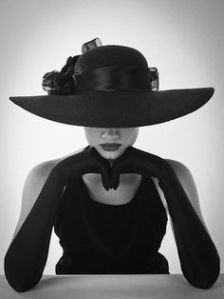In late nineteenth-century, literary representations of the new woman approached her autonomy in political, and sexual matters in terms of madness and criminality. Texts such as Lady Audley’s Secret (1862), a sensation novel based on the real case of Constance Kent, and published in a serialized form in the magazines Robin Goodfellow, and Sixpenny Magazine, illustrate Victorian domestic anxieties in the form of a bigamous woman who desserts her child and domestic duties. Zola’s Nana (1880) was another example of female dangerous sexuality embodied in a courtesan whose customers, strongly seduced, follow their own destruction. Lombroso’s psychiatric text Criminal Woman, the Prostitute, and the Normal Woman (1895) aims at a scientific classification of woman’s nature identifying the ‘normal’ and the ‘perverse’ woman.
Women who wanted to divorce could also be considered as undergoing mental, or physical illness, as The Awakening (1899) illustrates through the relationship between Edna Pontellier and the family doctor who interprets her anxieties of independence from a medical perspective. Popular imagination had it that a woman who did not circumscribed herself to the domestic realm was socially dangerous. For the bourgeoisie and the Victorians, this danger took criminal forms which could involve sexual aggressiveness. The mad woman was another way to represent non-domestic women, and a well-know topic of Victorian literature during the whole of the nineteenth-century.
After sexual mores changed progressively during the twentieth-century, and the emergence of a post-bourgeois, middle-class society took place, the mad and criminal woman disappeared as a source of anxiety. However, popular representations of women today seem to point out to another type of ‘unsettling’ woman: the ambitious female professional. It is striking the number of TV shows – which can be seen as replacing nineteenth-century weekly fouilletons – which present a a young woman between 25-35 years old willing to dangerously do anything for her career. These characters are sexually attractive, and usually facing a choice between her partner and career. As with the mad and criminal woman, the ambitious woman is indeed a woman. These TV shows do not use to put into question men’s ambitions, for whom their profession and family life do not appear as contradictory. Instead, top men use to have a wife who responds to the popular needs of a post-bourgeois society.
The American show Damages (2007-2012) shows the life of a young female attorney, Ellen who, at all risks, decides to work for one of the most terrifying lawyers of New York, Patty Hewes – who also happens to be a woman whose adolescent son has paid for her 30 years of professional dedication. The paternalizing advice Hewes gives to Ellen, “most men don’t handle an ambitious woman. It will take you some trials, but make sure you find one”, aims at showing Hewes’ dark arts in trying to break Ellen’s actual relationship with her boyfriend.
Damages follows a structure already found in the movie The Devil Wears Prada (2006), where a recent graduated in journalism starts working by Miranda Priestly, the most dreaded chief editor in the fashion world. Like Ellen, the young Andrea destroys her relationship with her boyfriend due to her ambitious career which is also mentored by the old Miranda, whose private life has been a records of defeats.
Andrea’s last move, her final renounce to become Miranda, is nothing but a social negotiation between the values of the post-bourgeois society, and the ways in which this is menaced, mostly, the professional top-woman. If it is true that Andrea changes her life before it is too late, she has already ruined her private life, and achieved what she wanted: a reference from Miranda which put her into a top newspaper. In both cases, however, Patty Hewes and Miranda Priestly embody a dangerous woman everybody is scare of, while their younger doubles represent the social negotiation between the acceptable and the non-acceptable, reminding us that the best choice for a young woman is still family.
These representations of contemporary women are, as they were in the nineteenth-century, structured around a male gaze, which constantly avoids the real solution to the family-work polemic: compatibility. The representation of the ambitious woman as monster in the twenty-first century does not help at all to understand that women do aspire to high positions as well as to build a family. Instead they send the message, ‘a woman who wants to dedicate her life to her career is a bad woman’. The mad, criminal, and ambitious woman is nothing but the a serial of different forms the same old tale takes. Now, indeed, it is ok that a housewife works but not that much.

